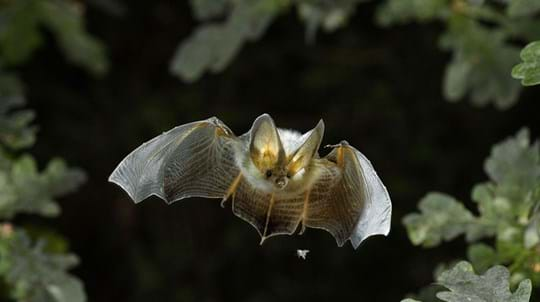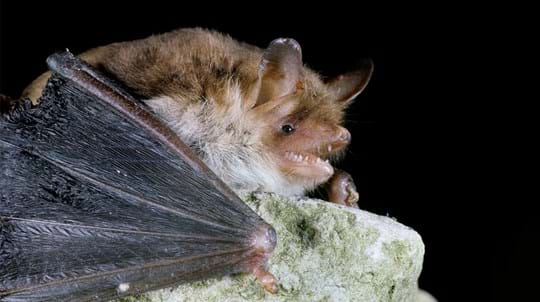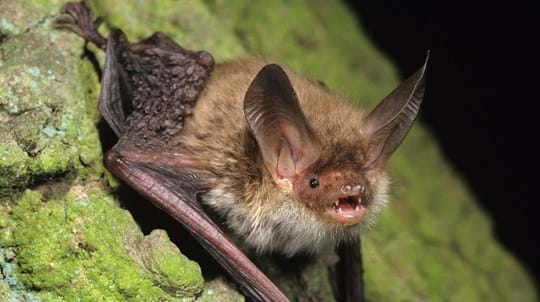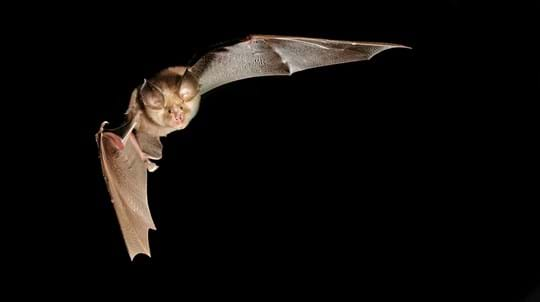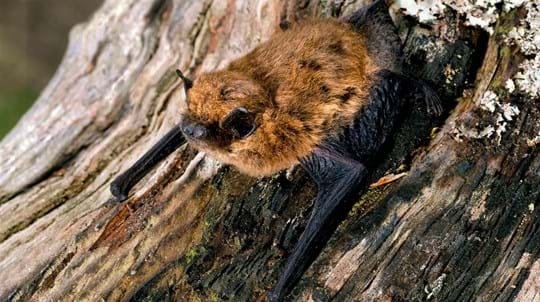
Credit: David Chapman / Alamy Stock Photo
How do brown long-eared bats breed?
Mating happens during the autumn, but bats can delay their pregnancies until they gather in maternity roosts in the spring. These maternity roosts can have groups of up to 30 pregnant bats. Unlike other bat species, male long-eared bats join the maternity roosts.
Bat pups are born from late June to July and become independent after six weeks.







